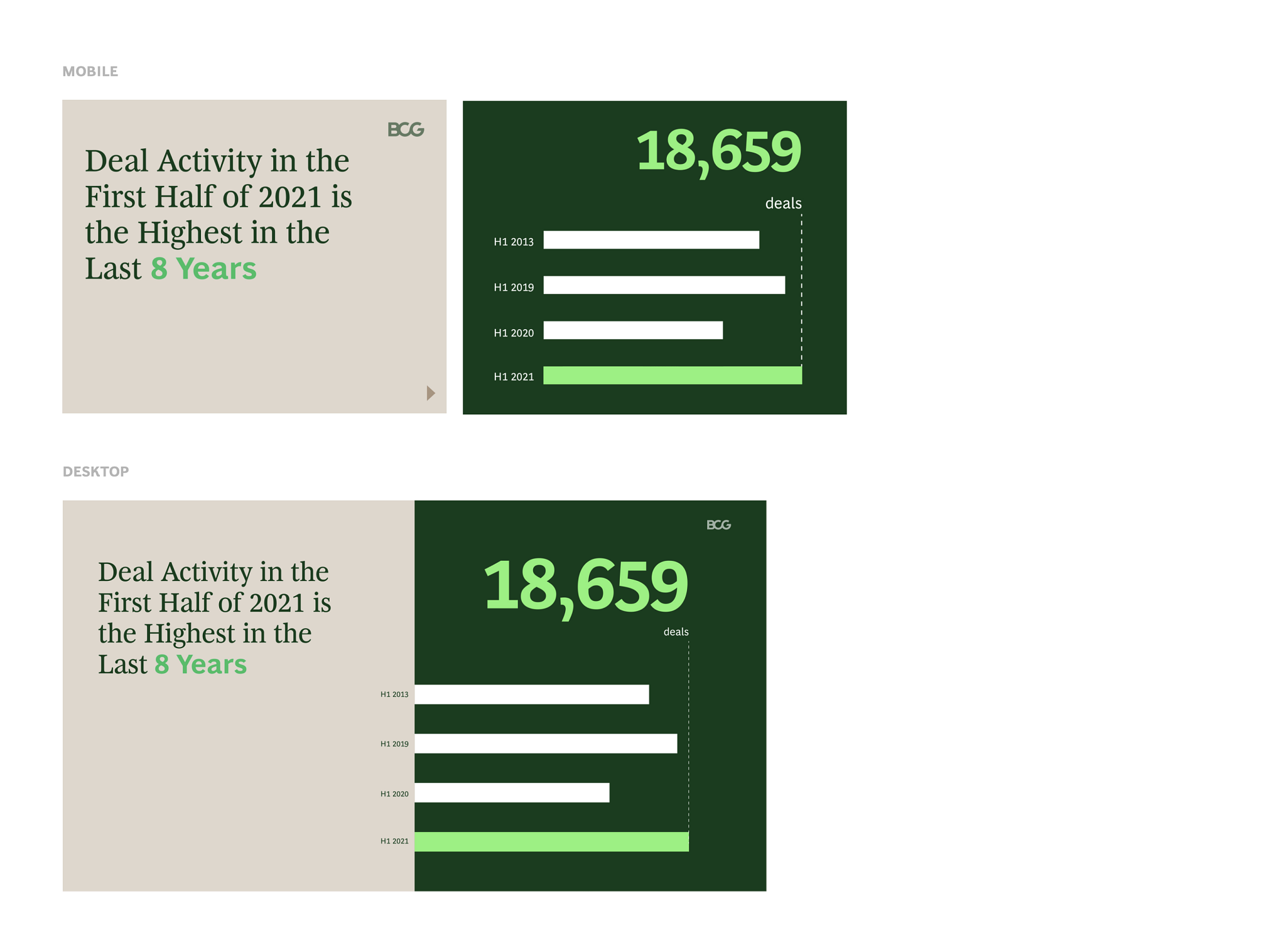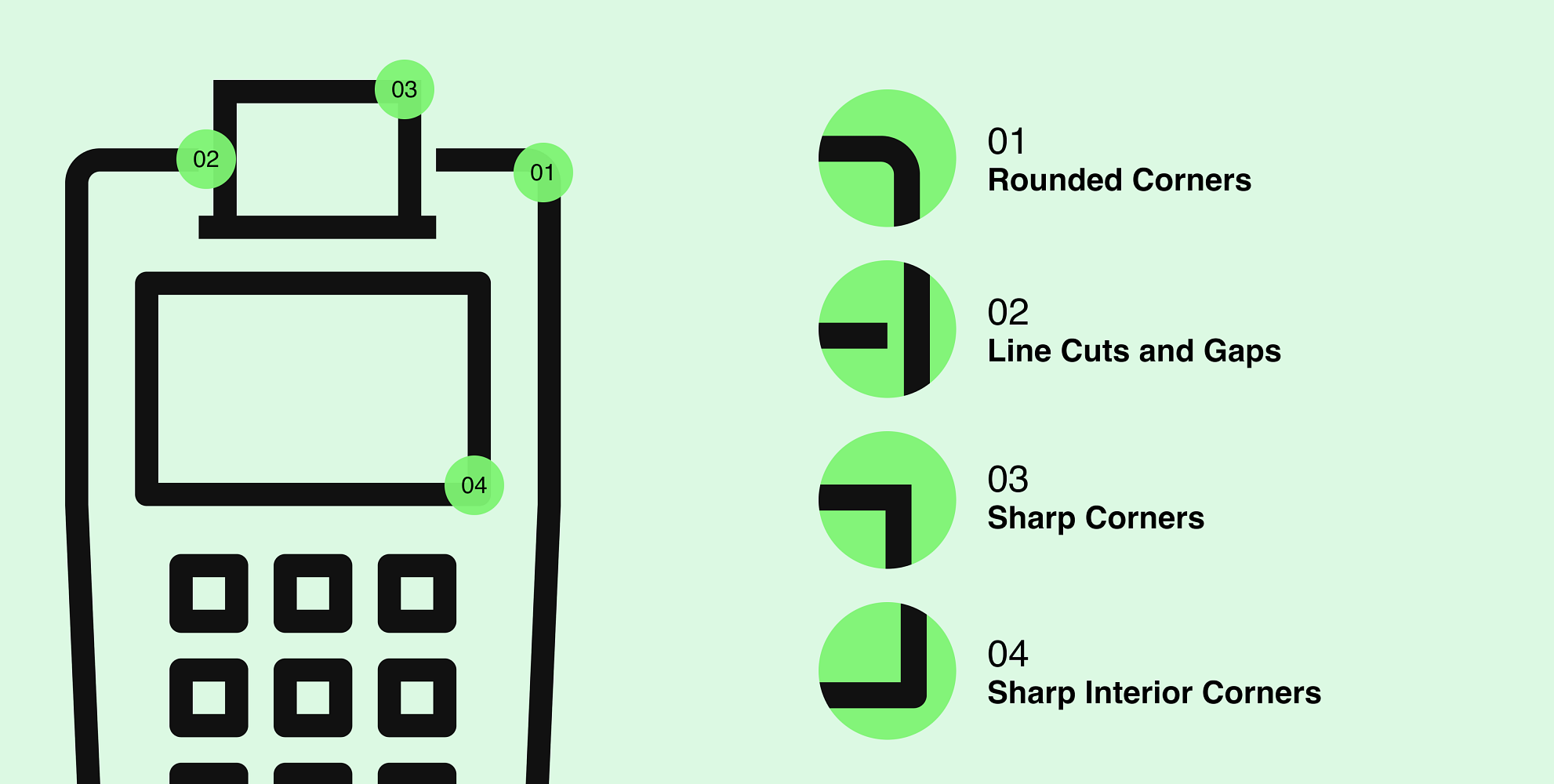BCG Motion
One of the big gaps in BCG's identity was the lack of direction for motion.
Working with a vendor, we have defined core behavior principles +
the suite of templates for production teams.
Key information:
Project name: BCG Motion
Date: 2022
Creative Direction: Jan Dudzik
Design Lead: Andre Pires
Vendor: Rare Volume (NYC)
Impact:
Global social media
Editorial
Company website
Events
In numbers:
36 templates (each in 16:9, 9:16, 1:1)
Briefly:
Introduction of motion design as part of the core brand vocabulary. Defining principles of motion behavior, types of motion, and templatizing them.
Here are the
3 core principles of motion:
Constant movement (Change)
This principle is derived from the main underlying theme of BCG which is “Change”.
During workshops with the media team, we have established that “Change” in motion would be expressed by constant movement, hinting at a dynamic company that never sits still.
Focus (Bringing insights to light)
One of the key Principles of BCG is “Bringing insights to light” and this is represented by a focusing motion of objects. It is way to visually express BCG’s ability to provide clarity in a testing time.
Solution (Conquering complexity)
Derived directly from BCG’s “2D Device”, this movement is inspired by another Principle of BCG - Conquering Complexity.
This motion expression shows how BCG builds best solutions for its clients, our of seemingly difficult and fractured picture.
Now, let’s look at some samples.
Below you can see a small set of the guiding motion principles in action.
All this (and more) has been delivered in multiple publishing formats and with extensive guidance.
Helps data speak
Bringing insights to light, in an enjoyable way. The paragraph on the left-hand side eases in a unique, ownable way, making a subtle nod to the movement of the ‘2D Device’.
Never stopping
The always-on-movement approach as well as characteristic ease-in of the text make it feel like BCG content without the need for more obvious elements such as logo.
Smartly inspired
The subtle behavior of text (here, in lower thirds) as it unfolds is derived from the movement of the ‘2D Device’
A to B
One of the reasons for the introduction of the ‘2D Device’ was its ability to animate and allow transition from A to B. You can see this being demonstrated on the left, as the image moves transitions.
Want to see some of the work?
There is plenty to choose from:
3D Imagery
Photography and Illustration
Motion Design
Icons
Data Visualisation
Sonic Identity







